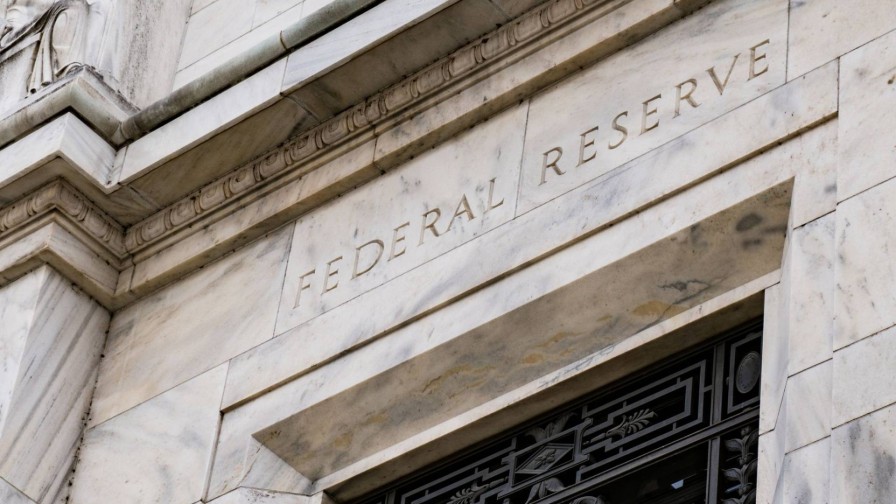Investor fixation with AI stocks ignited a 36% rally in Nasdaq-listed Oracle Corporation last week, propelling it to a market cap gain of US$250 billion ($424b) on the back of a glittering guidance book headlined by half a trillion dollars worth of forward orders from the likes of OpenAI, Meta, and Nvidia.
It was the largest gain for the cloud and enterprise software firm in more than 30 years – and almost equivalent to New Zealand’s annual GDP – followed mid-week with the announcement it was part of a consortium with Silver Lake to control TikTok’s US operations.
That was after US President Donald Trump signed an executive order on Tuesday delaying enforcement of a US law brought in last year requiring divestiture of Chinese ownership of the app until mid-December.
But the big stimulus to the market during what was otherwise a sedate newsweek came on Wednesday with the Federal Reserve’s 25-basis-point cut to its key interest rate to a range of 4-4.25%, the lowest level since December, 2022.
The response was unambiguous, with the Dow Jones Industrial Average surging more than 400 points, Treasury yields falling, and markets pricing in deeper easing.
Fed officials also signalled two more reductions for the remainder of the year, despite US inflation still hovering over the Fed's targeted 2% annual rate and seen as a response to Trump's trade wars and a slowing economy.
The Fed funds rate sets the rate at which banks lend money to one another and influences borrowing costs on consumer credit.
DeVere Group chief executive Nigel Green said the quarter-point cut had signalled an "explicit focus" on employment over inflation, given that US consumer prices are still running at 2.9% year on year.

Wall Street in tune with political nuance.
Not a tech bubble
Green said while policymakers can "tolerate a little extra inflation”, they weren't ready to risk a hard landing. And that, again, would see tech and infrastructure plays regain momentum as financing costs dropped, he said.
Describing it as the opening stage of a potential worldwide bull run, Green said the market's focus on political nuance will see every release "either confirm the Fed’s hand or accelerate it. Those holding back for perfect clarity will pay a premium to catch up”.
Craigs Investment Partners investment director Mark Lister agreed, saying AI – and, in particular, US AI module manufacturer Nvidia – remains the "poster child" of the tech and AI boom and continued to drive the US market.
Lister said while there were some nervous people in respect of the amount of "hype versus substance", and whether the market was pricing in too much good news too soon, markets were very happy to give the whole AI theme the benefit of the doubt.

Mark Lister.
Don't bet against AI
He said while the markets were looking expensive on a number of measures, it was quite different to the prior dot.com bubble. "Back then, it was all hope and expectations, whereas now we've at least got fundamentals supporting earnings growth and margin improvements.
"That doesn't mean the market's good value, but it's different to the tech-based boom-bust cycles," he said.
Lister said he was still happy to own US stocks, given the good things going on with the economy, monetary policy, and with the tech and AI sectors.
However, he said, he'd hang onto an exposure to Europe, Japan, and emerging markets where valuations were "much more reasonable", and was a way of hedging your bets if you're nervous about the US market.
"A bet against the US market is a bet against AI and I'm not sure that's an entirely wise move right now."
Back at home, Lister said while the weaker-than-expected GDP data, which showed an almost 1% contraction during the June quarter, was "really ugly" and old news, it tells us that the recession is "much worse, much deeper, and much longer" than people expected.
"The silver lining from the GDP report is that we can almost certainly expect Official Cash Rate cuts by the central bank in the coming months, starting with a 25bp cut next month."
Lister said the markets were pricing in about a 40% chance of a 50bp cut, on the belief that the Reserve Bank of New Zealand has to act more decisively and quickly.
"We're flat this year to date and had done nothing for the past five years, while other markets continue to push higher. Year to date, the US and Japan are up 13%, emerging markets are up 25%, and Europe's up 9%," he said.
"We're going sideways and we're lagging those markets, and that's just a reflection of our economy being in a difficult spot."
Enjoyed this recap? Don’t miss the forecast. NBR member subscribers can read our Market Outlook every Monday to know what movements to expect in the week ahead.





